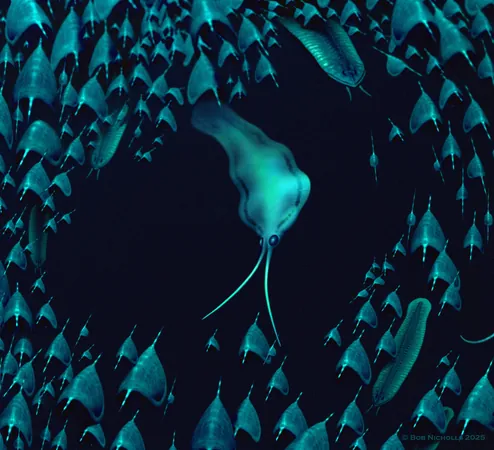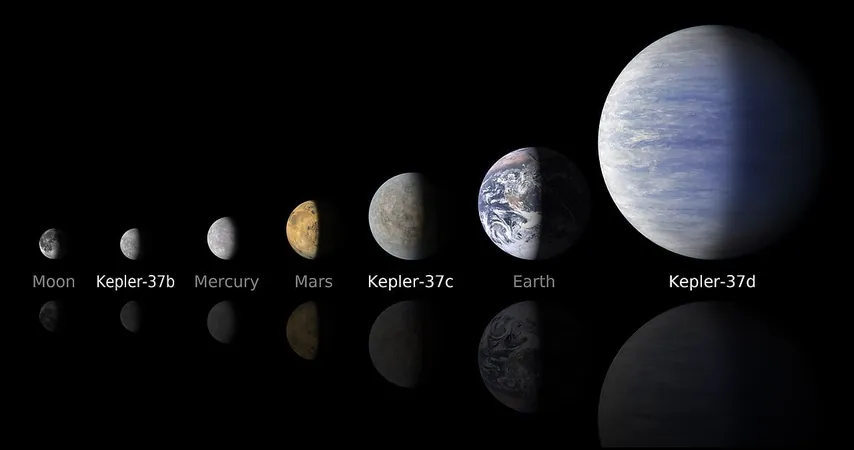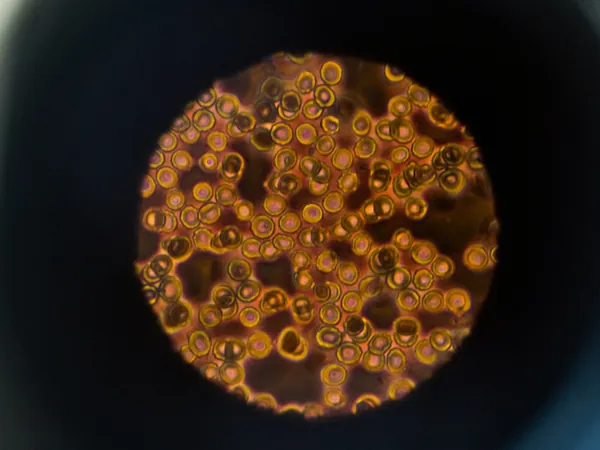
Ancient Squid-Like Creatures Reimagined: Evidence Points to Arrow Worm Ancestry!
2025-07-24
Author: Amelia
A Groundbreaking Discovery in Paleontology
Fossils unearthed in North Greenland have shattered long-held beliefs about ancient marine life. Researchers have revealed that creatures once labeled as squid-like ancestors, known as nectocaridids, actually belong to a lineage linked to arrow worms.
From Cephalopods to Chaetognaths
Previously categorized as cephalopods—marine mollusks with tentacles—nectocaridids have taken a surprising turn in classification. This new study, co-led by the University of Bristol, suggests these ancient beings were early relatives of arrow worms, or chaetognaths, marking a significant shake-up in our understanding of their evolutionary history.
Unlocking the Mysteries of Sirius Passet
The research stems from nine years of excavation at Sirius Passet, a site renowned for its pristine fossil preservation dating back 518 million years to the Early Cambrian period. Dr. Jakob Vinther from the University of Bristol highlighted the site’s incredible preservation capabilities, revealing intricate details of ancient organisms.
A Misleading Legacy
About 15 years ago, a study based on Burgess Shale fossils labeled nectocaridids as cephalopods, but Dr. Vinther expressed skepticism, noting that their anatomy didn’t align with cephalopods' known traits. The recent discovery provides critical clarity and context.
Fossil Analysis Reveals Evolutionary Links
The team meticulously examined 25 well-preserved specimens, uncovering distinct features of the nervous systems that confirmed their rightful place in the evolutionary tree. The fossils exhibited paired mineralized structures that strongly indicated their relationship with arrow worms.
A Unique Neuroanatomical Signature
Among the findings, the researchers brought to light a uniquely preserved anatomical feature, the ventral ganglion, crucial for identifying these species as early relatives of arrow worms. Dr. Tae-Yoon Park emphasized this discovery as pivotal in resolving the longstanding classification debate.
A Glimpse into Complex Prehistoric Life
Surprisingly, these ancient relatives boasted complex camera-like eyes, markedly different from modern arrow worms. Dr. Vinther noted their sophisticated predatory capabilities, suggesting these creatures roamed the oceans as formidable hunters, much like squids, which appeared millions of years later.
Fossils Tell a Story of Carnivorous Creatures
Additional evidence shows that some nectocaridids had remains of the swimming arthropod Isoxys in their digestive systems, reinforcing their status as active predators. Named Nektognathus evasmithae, this fossil pays tribute to Professor Eva Smith, Denmark’s first female law professor known for her advocacy.
By linking the characteristics of these ancient creatures to modern evolutionary patterns, the researchers illuminate the evolutionary narrative, showcasing a time when arrow worms were prominent predators in the ocean's food chain.









 Brasil (PT)
Brasil (PT)
 Canada (EN)
Canada (EN)
 Chile (ES)
Chile (ES)
 Česko (CS)
Česko (CS)
 대한민국 (KO)
대한민국 (KO)
 España (ES)
España (ES)
 France (FR)
France (FR)
 Hong Kong (EN)
Hong Kong (EN)
 Italia (IT)
Italia (IT)
 日本 (JA)
日本 (JA)
 Magyarország (HU)
Magyarország (HU)
 Norge (NO)
Norge (NO)
 Polska (PL)
Polska (PL)
 Schweiz (DE)
Schweiz (DE)
 Singapore (EN)
Singapore (EN)
 Sverige (SV)
Sverige (SV)
 Suomi (FI)
Suomi (FI)
 Türkiye (TR)
Türkiye (TR)
 الإمارات العربية المتحدة (AR)
الإمارات العربية المتحدة (AR)